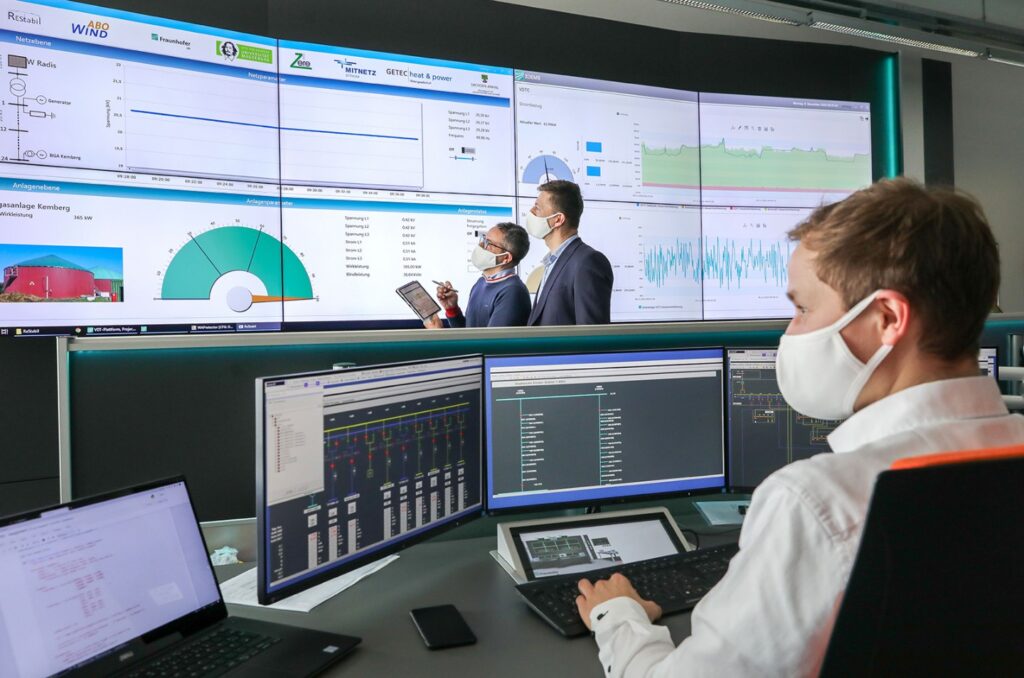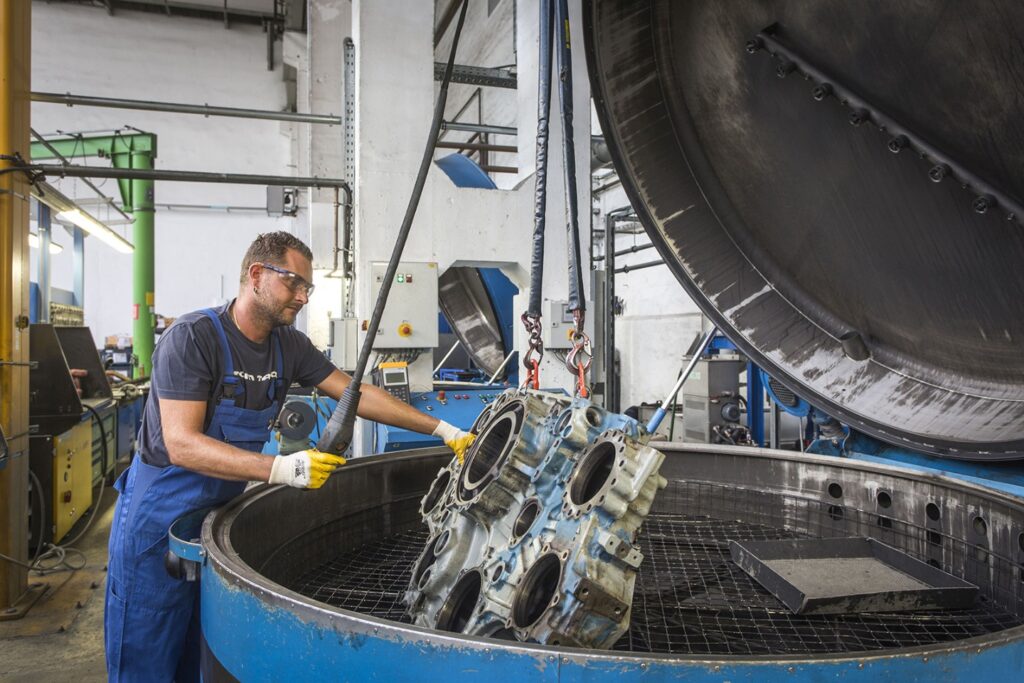The EU intends to become climate neutral by 2050 – through the European Green Deal and a tax on carbon emissions. Fraunhofer-research scientists are helping businesses capitalize on net-zero technologies for this. They improve energy efficiency significantly and reduce carbon emissions.
An environmental tax on carbon emissions is intended to usher in this transition and help the EU become climate neutral by 2050 at the latest. Net-zero technologies can be an important tool for this. They help establish a net-zero energy production and consumption footprint, i.e., not only to conserve electricity but also to produce the energy required, possibly even independently. This is interesting for more than just manufacturers. Other parties with high energy consumption, such as data centers, can profit from net-zero technologies too. Apart from reducing their carbon emissions, businesses additionally increase their self-sufficiency since they are able to free themselves from electricity market conditions somewhat. And businesses with net-zero technologies ultimately move closer to their goals and aspirations of operating more sustainably.
Energy efficiency improves by more than ten percent on average
Research scientists at the Fraunhofer Institute for Factory Operation and Automation IFF in Magdeburg are assisting them. “We have been working on the integration of net-zero technologies for years. Their importance for businesses will continue growing in the future. At the moment, we are improving energy efficiency by more than ten percent with their help,” explains Dr. Marc Richter, energy expert at the Fraunhofer IFF.

To do this, the research institute’s specialists assess many factors in addition to businesses’ energy footprint, e.g., their capability to produce electricity from renewable sources or the expediency of using energy storage systems. Energy flexibility is also examined: Can a business even produce a surplus of energy perhaps? If it can, interesting new business models, such as the sale of electricity and waste heat, can be developed.
Good practices: Telekom and Rolls-Royce
The research scientists have performed such analyses for various businesses, most recently Telekom and Rolls-Royce. “The new T-Systems data center in Biere, Saxony-Anhalt, for instance, is already very energy-efficient. All the same, the company contracted us to find more conservation capabilities as part of its sustainability strategy. We analyzed nearly one hundred technologies and individual actions that could be employed to reduce the carbon footprint more. These include photovoltaics and wind power as well as better refrigeration, heat reuse or simply more efficient computers. We were able, for instance, to identify capability to boost the level of energy self-sufficiency by as much as fifty percent. If they take advantage of all the suggested opportunities, this means the center could produce fifty percent of the energy it requires itself and cut an additional 20,000 tons of carbon dioxide per year,” says Richter, summing up.
The Fraunhofer research scientists rely on their own proven methodology for their analysis. It begins with an as-is survey: How do businesses rate in terms of sustainability? “From experience, we can say the standard is very high; the low hanging fruits have been picked clean,” says Richter. This is why the team performs a technology and action screening first to identify opportunities to reduce carbon emissions at a particular facility. They compile a catalogue of different technologies and back them up with criteria, such as potential carbon reduction, the quantity of energy produced and so forth. Then they prioritize them. Businesses and their individual objectives are heavily involved here. “While cost is one business’s focus, complete self-sufficiency is more important to another. A third wants to supply itself only ecologically sustainably,” observes Richter.
Opportunities from purchasing green hydrogen
In the third stage, the research scientists examine sizing. The use of photovoltaic systems suggests itself at Rolls-Royce, for instance, because of the numerous rooftops there. To what extent could photovoltaics be used? How much energy would be produced? How does the production profile match up with the load profile? Looking beyond just the local options, the research scientists also identify opportunities other energy carriers provide – purchasing green hydrogen or connecting to a local wind farm, for instance.

Finally, the research scientists define specific development pathways together with businesses. They specify, for instance, the number of photovoltaic modules, fuel cells and storage systems potentially required to achieve certain objectives – along with the respective expenditures, energy output, carbon saving and percentage level of self-sufficiency. “Depending on the scope, we develop three, five, sometimes even as many as ten development pathways then,” says Richter. Rolls-Royce and T-Systems primarily wanted proposals that can be implemented quickly and are therefore based on existing technologies in part. The research scientists also considered synthetic fuels from green hydrogen or methane, among others, in development pathways with new technologies for Rolls-Royce. “We are technology-impartial,” Richter declares. “We recommend those actions or technologies, which were assessed to have the biggest impact scientifically and technically as well as economically, to companies transitioning to sustainability.”



